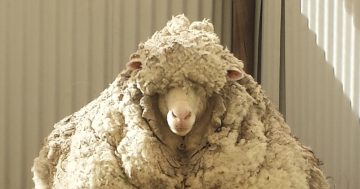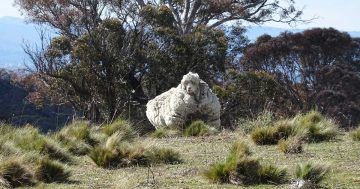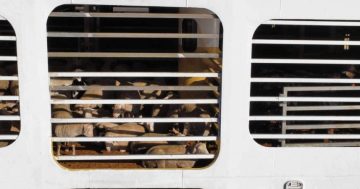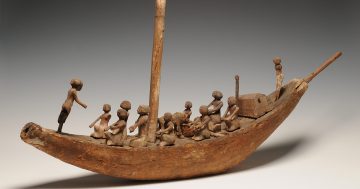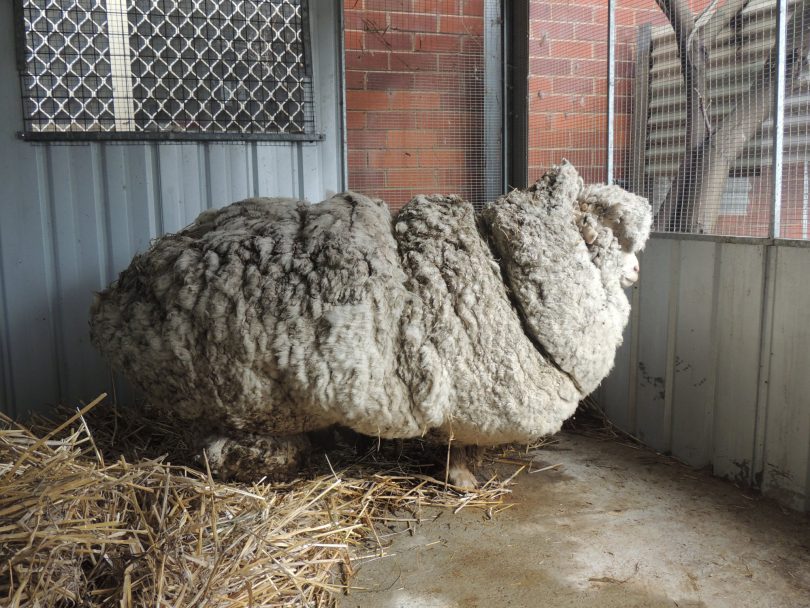
Chris the sheep carried the world’s heaviest fleece at 41.1 kilograms. Photo: National Museum of Australia.
He carried the heaviest burden among his woolly friends and found a place in Canberrans’ hearts when discovered alone on the city’s outskirts.
By avoiding human contact for about five years, Chris the sheep grew the world’s heaviest fleece – his claim to fame totalling 41.1 kilograms.
The Australian merino wether fleece broke the 2014 record set by New Zealand’s Big Ben of 28.9 kg, the 2004 record set by New Zealand’s Shrek of 27 kg, and remains unchallenged to this day.
Chris was and still is a marvel, which is why the National Museum of Australia has decided to re-tell his remarkable story as part of its 20th-anniversary celebrations.
The museum’s head of curatorial centres, Dr Martha Sear, was around when Chris was taken into RSPCA’s care in 2015 and still loves seeing visitors light up as they view his fleece in the Landmarks exhibition.
“It’s often met with ‘wow’ or ‘oh my god’. It’s an incredible story. He was such a character and a survivor. He was a sheep who made his own way in the world,” Ms Sear said.
Personal trainer Sue Dowling found Chris while walking at Mulligans Flat in north Canberra.
Struggling to move due to the weight of the fleece, Ms Dowling named the merino wether after ‘Chris the unhappy sheep’ from the British comedy series Father Ted.
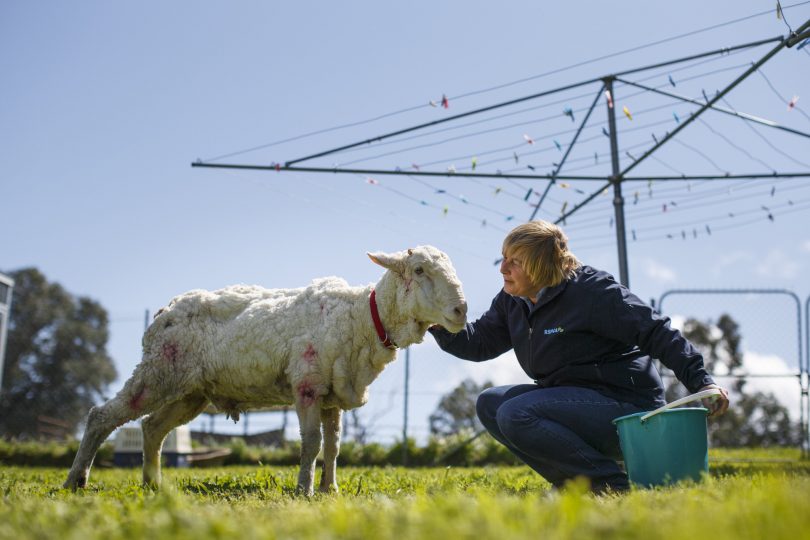
Chris at the RSPCA centre with carer Jane Gregor. Photo: National Museum of Australia.
She called the RSPCA, which took Chris to its Weston shelter and organised for Australian champion shearer Ian Elkins to free Chris of his mighty woollen coat.
Underneath the fleece, Chris had skin infections from the urine and compacted faeces in the wool.
It is not known how Chris came to be alone. Several farmers from New South Wales and around Canberra came forward to claim him, but none could match his markings.
Chris lived out his later years at Little Oak Sanctuary, close to Canberra, and died in 2019 aged nine.
The sanctuary’s owners and Chris’s fans were devastated by his death.
“He was so much more than this, so very much more, and we will remember him for all that he was — someone, not something,” the sanctuary wrote in a Facebook post at the time.
While it was a sad ending to the story, Chris had outlived many’s expectations. He was given only weeks to live with the fleece on.
Instead, his memory survives at the museum.
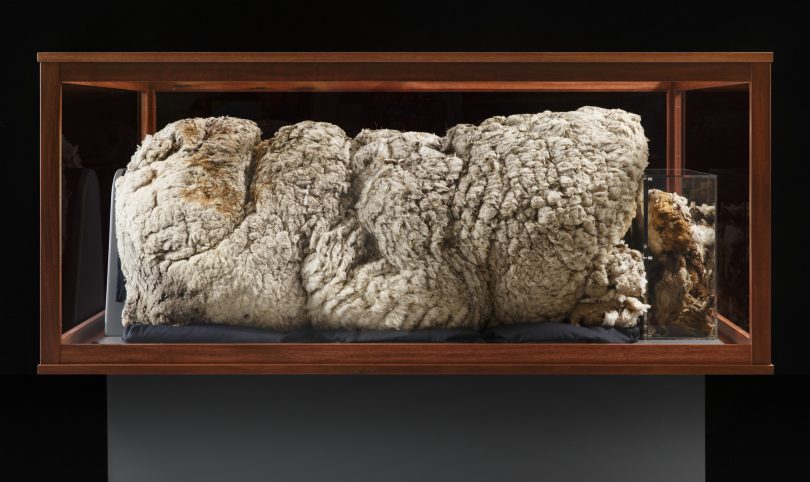
Chris’s remarkable fleece on display at the National Museum of Australia. Photo: National Museum of Australia.
The RSPCA wanted Chris’ fleece to be on display for all to see at a national institution and the museum was happy to share his story.
Some people say what happened to Chris was cruel. However, Ms Sear says his story represents the lengths farmers go to to take care of their animals.
“His fleece would have never grown to that size if he hadn’t run away. He tells the story of how Australia bred the merino and the work farmers do to keep sheep regularly shorn and disease-free,” Ms Sear said.
Chris’ fleece was in such a bad way that it had to be packed and placed in a freezer for several days to kill any insects. It was then dried in a vacuum freezer and laid out to plump up again, ready for display.
RSPCA ACT also wrote a children’s book titled The Misadventures of Chris the Sheep, featuring artwork created by Canberra artist Kylie Fogarty, to educate children about animal welfare and raise money for unwanted, abused and neglected animals in the ACT.
The museum, which opened its doors at Acton on 11 March 2001 to preserve and interpret Australia’s social history, is inviting visitors to see Chris’ fleece and the thousands of other exhibits on display.
It has many great plans in store for its 20th year, including a new gallery called Great Southern Land, the opening of its Discovery Centre for children and families, and the unveiling of key objects from the recently acquired Trevor Kennedy collection.
Original Article published by Hannah Sparks on About Regional.












